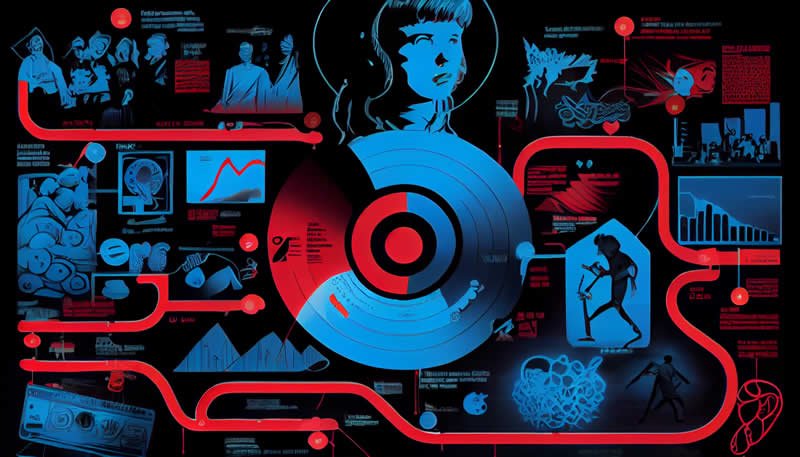A Brief History: The Cycles Of Pop Music
In the early 50’s, it was Doggie in the Window era. Mitch Miller, Doris Day and the like were making snappy and happy songs. The underground was brewing with a sonic gumbo of Black artists and Hillbillies, but in the mainstream, it was all pretty, safe and happy. A musical LULL. During lulls, the mainstream music culture:
*Features harmless lyrics by harmless artists.
*Labels/Moguls are in control and the formula is followed closely
*The “look” is non threatening.
*Dancing is at a popularity peak as people dance and hum…but don’t really
LISTEN.
*Music has minimal impact on culture other than being a soundtrack
*There’s an underground happening, but it is still out of reach to the
masses.
*It’s about tabloids more than musical notes.
*Music media is on autopilot.
*McDonalds Pop rules. Predictable…safe…consistent with few
surprises. Musical originators are copied,
cleansed for mass consumption and formularized.
*Artists have short life spans....and become trivia questions
Then—There are intense periods. Periods of tremendous change compressed into a short period of time. During Intense periods:
*The old wave hits a brick wall.
*The “sound” changes. New instruments…new techniques…new recording
methods.
*The “look” is new…different and scary.
*Satan is responsible according to many.
*Listening Technology changes.
*Music impacts culture profoundly. There are fights over music.
*Artists are in control.
*People dance less and start listening more
*The "next generation" of long term artists emerge
*Music Media goes through explosive evolution.
*Not a lot of copying artists--everyone is too busy creating their own
sound or contributing to the movement.
The intense periods happened: 1955 (Rock n Roll); 1964 (Liverpool); 1969 (Everything); 1980 (New Wave); 1993 (Grunge). All of the above characteristics happened during these periods…and all of the ‘lull’ characteristics happened between these periods. Take the intense period of ’69:
-- All over for the old wave. Paul Revere and the Raiders hit the wall.
-- Fuzz tones to synths to an arms race over number of tracks and
amplifier output changed the sound. The modification and enlargement
of traditional instruments.
--Musicianship was a selling point
--Lyrics were social statements
--Junior came home from college looking like a hippie and got thrown out of the
house.
--Satan was responsible for the Iron Butterfly
--Stereo revolutionized listening as it became mainstream.
--FM emerged as a force
--Walk into the wrong bar and play Hendrix on the jukebox and a fight would
ensue
--No one told Cream how to write a song or to keep it 3 minutes.
The next generation of artists is created. Lasting artists.
*You don’t DANCE to Abbey Road. You LISTEN.
This is all highly CONDENSED and probably arguable, but due to space and finger strength limitations I can’t get into all of the details, but suffice to say, we are IN a musical lull...live with it (and of course some prosper mightily from it)—or try to be part of the change. There WILL be another intense period. In ’62 amidst every singer named Bobby, in ’66 amidst the canned Monkees, in ’76 amongst the sappy pop, 86 with mindless hair bands, and now---it’s a lull. Like before—the lull makers hit the wall. Lulls still create fans! If you were in your musically formative 16-20 years during a lull—you still LOVE that music—but BIG PICTURE—the intense periods are where the shocking change happens. And of course there are a few artists that cut through. Elvis, Beatles, Dylan, Sinatra—but those are the RARE ‘timeless’ artists that will be around in 200 years…can’t say that about more than a handful. Hopefully there’ll be more over time.
